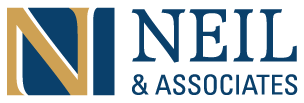***CRA Update – March 28, 2024***
In recognition that the new reporting requirements for bare trusts have had an unintended impact on Canadians, the Canada Revenue Agency (CRA) will not require bare trusts to file a T3 Income Tax and Information Return (T3 return), including Schedule 15 (Beneficial Ownership Information of a Trust), for the 2023 tax year, unless the CRA makes a direct request for these filings.
Over the coming months, the CRA will work with the Department of Finance to further clarify its guidance on this filing requirement. The CRA will communicate with Canadians as further information becomes available.
Bare trusts are exempt from this filing requirement for the 2023 tax year, unless directly requested by the CRA.
Previous article, below, no longer applicable to Bare Trusts for 2023 tax year
Headlines
New filing and disclosure rules have been enacted for the 2023 tax year, submissions to Canada Revenue Agency are due on April 2, 2024, for those trusts with a calendar-year year-end. All others have 90 days from their year-end to file and will be subject to the new rules as well.
All Bare Trusts must file additional details with CRA through a Schedule 15 – Beneficial Owner Information of a Trust , and most will be required to complete a T3 Trust Income Tax and Information Return. To undertake these filings a Trust Account Number is required, and an application is needed to obtain one.
When filings to CRA are required, especially when new regulations have been enacted, it is best to receive professional advice from tax and legal experts tailored to your unique situation.
What You Need to Know
A major change in regulations for trusts is the requirement for Bare Trusts to file a T3 tax return. Bare Trusts did not have an obligation in years prior to the 2023 tax year to file a T3 Return. Thankfully, and perhaps an admission of the confusion created by delays and CRA’s consultation process, Bare Trusts have received a one-time amnesty from penalties. This proactive relief is for Bare Trusts only and only for the 2023 tax year.
Typically, filing late would incur a minimum penalty of $2,500 or 5% of the maximum fair-market value achieved at any point during the year, whichever is higher. This penalty will begin being enforced for the 2024 tax year.
Each year an annual T3 must be filed along with a new Schedule 15 even if the details have not changed. Failing to file on-time is considered “gross negligence” and earns the $2,500 or 5% penalty for all trusts, including Bare Trusts, starting with the 2024 tax year.
The following includes examples of situations where a T3 return may now be required:
- A bare trustee corporation acts as the title holder to an asset for the benefit of someone else, such as holding the title to investments in a nominee corporation. This arrangement is often used in real estate development, oil and gas and resource exploration, or general estate and probate planning.
- An individual holds an “in trust” bank or investment account for a child or a parent.
- A parent corporation holds cash in trust for underlying subsidiaries (i.e., certain corporate “cash sweep” arrangements).
- A general partner, typically a corporation, in a limited partnership arrangement is the title holder to the underlying assets of the partnership. This arrangement is typically used in real estate investments but may also include business operating partnerships.
- An individual has purchased a property “in trust”, but the actual owner is not clearly identified. This arrangement is commonly used with real estate purchases or certain pooling of private investments where the title holder or purchaser is not the true underlying economic or beneficial owner of the property; and
- An individual is registered on the title of any real estate that they do not beneficially own (e.g., a named interest on a child’s or parent’s home for estate planning purposes).
The above is not an easily understood or exhaustive list and, therefore, legal counsel should be consulted to identify all informal trust arrangements and instances of a Bare Trust that may now require a T3 return.
Exceptions exist for new trusts, those trusts holding only money and designated financial assets below $50,000, mutual fund trusts, registered charities, and not-for-profit organizations. A specialist accountant can provide a professional opinion on the applicability of the exceptions.
The Schedule 15, which is to be filed along with the T3 return is relatively simple and reports name, address, date of birth, jurisdiction of residence and taxpayer identification number (i.e. Social Insurance Number for individuals) for each Trustee, Beneficiary and Settlor of the Trust.
Both the T3 and Schedule 15 are due 90 days following the trust’s year-end, and the first filing date that includes the new regulations is April 2, 2024, for trusts with a year-end aligned with the calendar-year.
The Bottom Line
Like many regulations the details meant to provide clarity often make necessary actions more obscure, and almost always more complex. A trusted advisor on tax matters for trusts is the most appropriate starting point.
The need for sage advice in this area has increased due to both the complexity and the potential penalties. The relief will not apply for the 2024 tax year and using 2023 as a test-case to add new filing requirements to your annual process is a relatively painless approach.
More information can be found at https://www.canada.ca/en/revenue-agency/services/tax/trust-administrators/t3-return/new-trust-reporting-requirements-t3-filed-tax-years-ending-december-2023.html#toc4 and https://www.ey.com/en_ca/tax/tax-alerts/2024/tax-alert-2024-no-04


